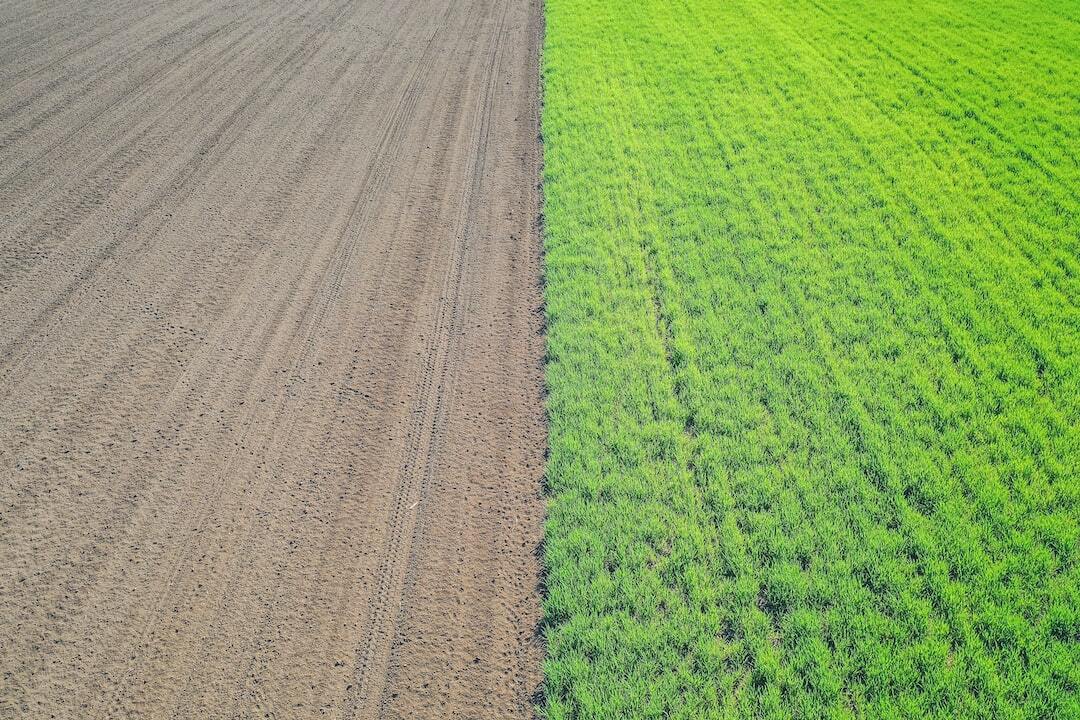Introduction
Regenerative farming, my fellow green thumbs, is all about revitalizing our soil and ecosystems while boosting crop production. It’s a game-changer, especially for us cannabis enthusiasts! By embracing practices that enhance biodiversity, enrich soil, and improve water management, regenerative farming aims to create a sustainable and resilient agriculture system. It’s time to ditch the harmful chemicals and practices that damage our planet and embrace a future that’s greener, healthier, and more productive.
Now, let’s talk about the good stuff – cannabis cultivation. Regenerative farming plays a vital role in growing top-notch cannabis plants that are not only potent but also environmentally friendly. By adopting regenerative practices, we’re nurturing the soil and the environment, ensuring the best possible conditions for our beloved cannabis plants to thrive. So, let’s dive into the world of regenerative farming and revolutionize our agriculture practices for a sustainable future, shall we?
Understanding Regenerative Farming
Before we dive into the nitty-gritty, let’s get the basics down. Regenerative farming is an approach to agriculture that focuses on improving soil health, increasing biodiversity, and restoring ecosystems. It’s built on five core principles:
- Minimizing soil disturbance: Reducing tillage to maintain the soil structure and prevent erosion.
- Maximizing plant diversity: Growing a variety of crops to promote a balanced ecosystem and reduce pests and diseases.
- Keeping the soil covered: Using cover crops and mulch to protect the soil from erosion and temperature extremes.
- Maintaining living roots: Ensuring plants are growing year-round to feed soil organisms and build soil organic matter.
- Integrating livestock: Grazing animals can help cycle nutrients, control weeds, and improve soil structure.
Now, how does regenerative farming compare to traditional farming? Traditional farming methods often rely on practices like monocropping, heavy tillage, and synthetic inputs, which can degrade the soil, reduce biodiversity, and contribute to environmental issues like water pollution and greenhouse gas emissions. On the flip side, regenerative farming works with nature, not against it. By nurturing soil health and promoting biodiversity, regenerative farmers can grow more resilient and nutrient-dense crops without relying on harmful chemicals or practices.
But, what’s in it for you? Plenty! Regenerative farming comes with a long list of environmental and economic benefits. For starters, healthy soil can store more carbon, helping mitigate climate change. Improved water management means less water waste and reduced pollution. Economically, regenerative farming can lower input costs, improve crop yields, and boost long-term productivity. So, it’s a win-win for our planet and our pockets!
Transitioning to Regenerative Farming: Steps to Take
Ready to jump on the regenerative farming bandwagon? Let’s break down the steps you need to take to transform your agriculture practices.
Assessing Your Current Farming Practices
Start by taking a good, hard look at your current farming methods. Identify areas where you can improve soil health, reduce chemical use, and promote biodiversity. Keep in mind, transitioning to regenerative farming doesn’t have to happen overnight. It’s a process that can be gradual and tailored to your unique situation.
Implementing Regenerative Practices
Next, let’s explore some key regenerative practices you can start incorporating into your farming routine.
Cover Cropping
Plant cover crops between your main crops to protect and nourish the soil. Cover crops can suppress weeds, control pests, and improve soil fertility. Plus, they look pretty neat!
Crop Rotation
Switch it up! Rotate your crops to break pest and disease cycles and enhance soil health. Different crops have different nutrient needs, so switching them around can keep your soil balanced and happy.
No-Till Farming
Put down that plow! No-till farming means leaving the soil undisturbed, which helps maintain its structure and reduces erosion. This practice also promotes a healthy soil ecosystem, teeming with beneficial organisms.
Integrating Livestock
Bring on the animals! Grazing livestock can help recycle nutrients, control weeds, and improve soil structure. Just be sure to manage their grazing patterns to avoid overgrazing and soil compaction.
Agroforestry
Combine trees, shrubs, and crops for a diverse and productive system. Agroforestry can provide shade, improve soil health, and even provide additional income through timber or fruit production. Talk about a win-win!
Monitoring and Adjusting Your Farming Practices Over Time
Last but not least, keep an eye on your progress. Track your soil health, crop yields, and overall ecosystem health. Adjust your practices as needed and continue learning from your successes and challenges. Regenerative farming is a journey, and there’s always room for growth and improvement.
Regenerative Farming and Cannabis Cultivation
Alright, let’s talk about what you came here for – cannabis! How does regenerative farming fit into the world of cannabis cultivation, and why should you care? Let’s find out.
The Importance of Soil Health for Cannabis Plants
Healthy soil is like a buffet for your cannabis plants. It provides all the nutrients and minerals they need to grow big, strong, and potent. Plus, healthy soil promotes a thriving ecosystem of beneficial microorganisms that protect your plants from pests and diseases. In short, good soil is the foundation of a successful cannabis grow.
Using Regenerative Farming Techniques in Cannabis Cultivation
So, how can you apply regenerative farming practices to your cannabis garden? Start by focusing on soil health. Use organic amendments like compost and worm castings to build soil fertility. Plant cover crops to protect the soil and add nutrients. Practice crop rotation and intercropping to keep your soil balanced and reduce pest pressures. And, of course, minimize tillage to preserve soil structure and encourage a healthy soil ecosystem.
The Role of Regenerative Farming in Reducing the Environmental Impact of Cannabis Production
Let’s face it, cannabis cultivation can take a toll on the environment. Water use, energy consumption, and waste generation are just a few of the challenges facing the industry. But, by embracing regenerative farming practices, we can significantly reduce the environmental impact of cannabis production.
Healthy soil means less need for synthetic fertilizers and pesticides, which in turn means less pollution and resource consumption. Improved water management techniques can help conserve water and reduce runoff. And, by promoting biodiversity and ecological resilience, regenerative farming can help create a more sustainable and environmentally friendly cannabis industry. So, let’s do our part to keep the earth green and our cannabis greener!
Success Stories: Regenerative Farming in Action
Need some inspiration? Let’s take a look at a few real-life examples of regenerative farming operations that are making a difference. These success stories show that regenerative farming is not only possible but also profitable and environmentally friendly.
Case Studies of Successful Regenerative Farming Operations
From small-scale gardens to large commercial farms, regenerative farming is taking root all over the world. Here are a few examples:
- Gabe Brown’s Ranch: Gabe Brown, a farmer in North Dakota, has transformed his 5,000-acre ranch into a regenerative farming showcase. By using no-till, cover cropping, and livestock integration, he’s seen a dramatic increase in soil health, crop yields, and overall farm profitability.
- Singing Frogs Farm: This small-scale farm in California is a prime example of regenerative farming on a smaller scale. By using no-till, intensive planting, and diverse crop rotations, the farm has tripled its soil organic matter and increased its profitability.
- Laikipia Wilderness: In Kenya, the Laikipia Wilderness project is using holistic planned grazing to restore degraded rangelands and support local wildlife populations. The project has seen significant improvements in soil health, water retention, and biodiversity.
Lessons Learned and Best Practices from These Success Stories
These success stories demonstrate that regenerative farming is achievable, sustainable, and profitable. Key takeaways from these examples include:
- Start small and scale up: It’s possible to begin implementing regenerative practices on a small scale and gradually expand as you gain experience and confidence.
- Focus on soil health: Healthy soil is the foundation of a successful regenerative farming operation. Invest time and resources in building and maintaining soil fertility.
- Embrace diversity: Diverse crop rotations, intercropping, and livestock integration can all help create a more resilient and productive farming system.
- Be patient and adaptive: Regenerative farming is a long-term commitment that requires patience and adaptability. Monitor your progress, learn from your mistakes, and adjust your practices as needed.
Ready to join the regenerative farming revolution? Let’s get started and create a more sustainable future for our planet and our cannabis plants!
Resources for Further Learning and Support
Feeling inspired? Ready to embark on your regenerative farming journey? Here’s a list of resources to help you learn more and connect with like-minded folks in the regenerative farming community.
Organizations and Networks Promoting Regenerative Farming
There are numerous organizations and networks dedicated to promoting regenerative farming practices. Some of these include:
- Regenerative Agriculture Foundation: A philanthropic organization that supports regenerative farming projects and research.
- Rodale Institute: A research and education center focused on organic and regenerative farming practices.
- Regeneration International: A global network that advocates for regenerative agriculture and provides resources and support for farmers.
- Savory Institute: An organization that promotes holistic management and regenerative grazing practices.
Books, Articles, and Documentaries on Regenerative Farming
There’s no shortage of information on regenerative farming. Here are some books, articles, and documentaries to get you started:
- Dirt to Soil by Gabe Brown: A firsthand account of Gabe Brown’s journey to regenerative farming and the lessons he learned along the way.
- The Soil Will Save Us by Kristin Ohlson: An exploration of the potential of regenerative farming to combat climate change and restore our planet.
- Inhabit: A Permaculture Perspective: A documentary that showcases the principles of regenerative farming and permaculture in action.
- Kiss the Ground: A Netflix documentary that highlights the power of regenerative farming to heal the planet and mitigate climate change.
Courses and Workshops on Regenerative Farming Techniques
Ready to roll up your sleeves and get hands-on experience? Check out these courses and workshops that teach regenerative farming techniques:
- Rodale Institute Workshops: The Rodale Institute offers a variety of workshops on topics like organic farming, composting, and soil health.
- Savory Institute Courses: The Savory Institute provides courses on holistic management and regenerative grazing practices.
- Permaculture Design Courses: These courses teach the principles of permaculture, a design system that incorporates regenerative farming practices.
With these resources at your fingertips, you’re well on your way to becoming a regenerative farming master. Remember, the journey to a sustainable future starts with a single step. Let’s make that step together and create a greener world for all!
Conclusion
There you have it, fellow green thumbs! Embracing regenerative farming is not only essential for a sustainable future but also a fantastic way to level up your cannabis cultivation game. By nurturing our soil, promoting biodiversity, and working in harmony with nature, we can create a more resilient and productive agriculture system that benefits both our environment and our communities.
Imagine a cannabis industry where regenerative farming practices are the norm, and the environmental impact is minimal. It’s a vision worth striving for, and it starts with each of us making a commitment to change. So, let’s join hands and revolutionize our agriculture practices for a greener, healthier, and more sustainable future.
As you embark on your regenerative farming journey, remember that we’re here to support you every step of the way. From high-quality cannabis seeds to expert cultivation tips, our mission is to empower you to grow the best cannabis possible while making a positive impact on our planet. So, go forth and grow, and let’s make the world a greener place together!








